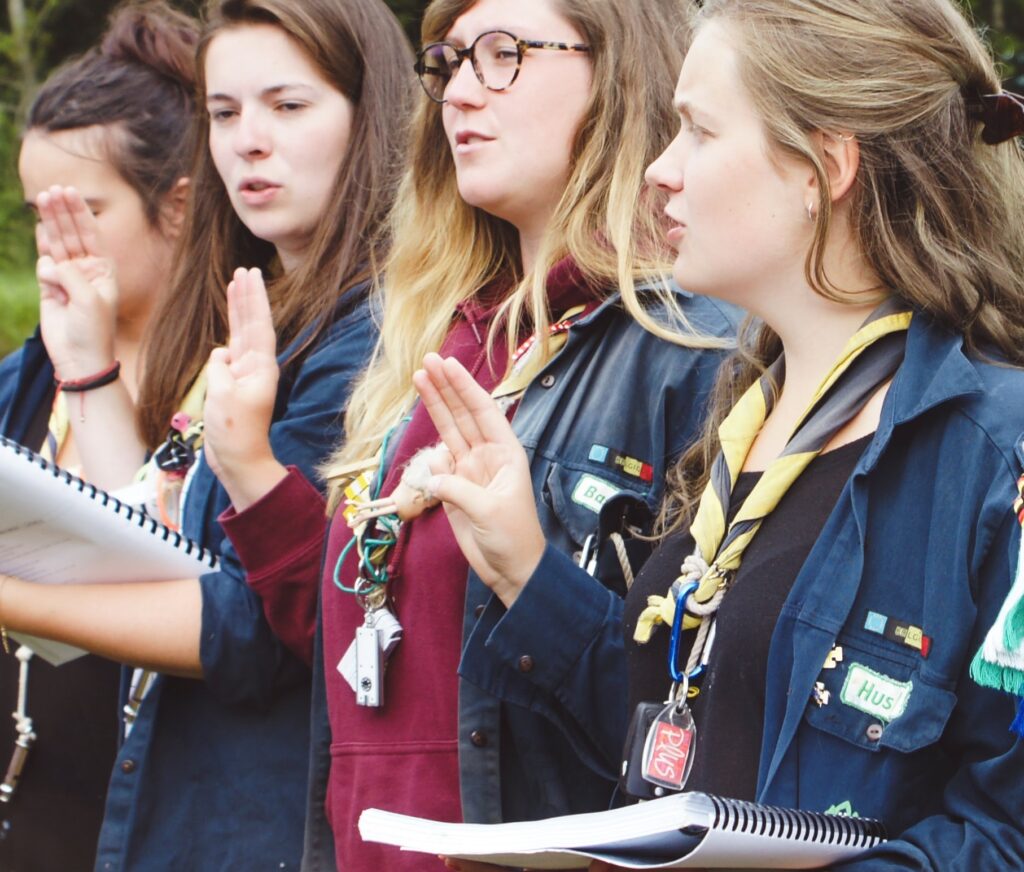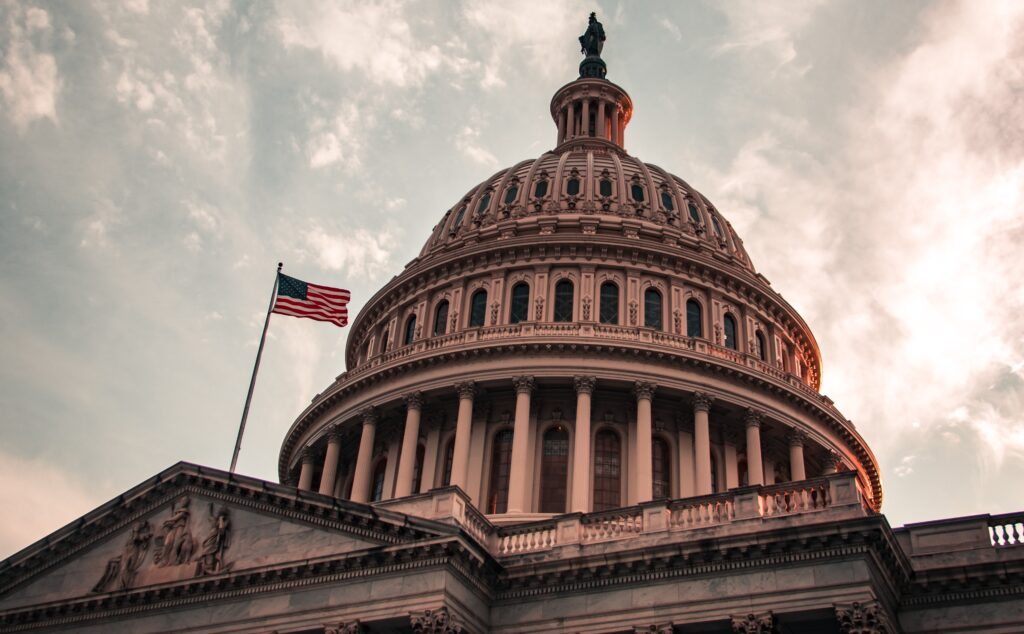
When society comes apart at the seams
James Bradshaw finds the predictions of an American academic eerily accurate, but discovers in them ideas for a better future.
You may not realise it, but the world of social contacts and community spirit is fragmenting around you at an alarming rate. It is more than 20 years since the Harvard Professor Robert Putnam shot to fame thanks to the success of his harrowing book Bowling Alone: The Collapse and Revival of American Community.
In this work, Putnam laid out a convincing case that community involvement had declined massively in America since the 1960s. But powerful as his argument and supporting evidence were, readers sometimes wrongly assume that Putnam’s analysis is only relevant to developments in the United States. In fact, the work – which led to Putnam being heralded as the ‘poet laureate of civil society’ – began when he was studying political reforms in Italy in the 1970s.
Indeed it would not be exaggerated to argue that the social shift away from community and towards individualism which Putnam has highlighted has enormous ramifications for all societies, at a time when many Western democracies are suffering due to increased social alienation.
Defining social capital
To Putnam, the essential truth of social capital is that the dense networks which exist between people – within families, member organisations, religious congregations, and so on – foster positive forms of behaviour. Instead of atomised individuals remaining detached from one another, these interpersonal connections allow people to trust one another to a greater degree and to work together in pursuing shared goals.
Perhaps the most important distinction is between bonding social capital (which cements the links between those who share something in common) and bridging social capital (which allows for links to develop with those who may be quite different). Putnam emphasises the particular importance of this second element within a diverse society.
“Bonding social capital is a kind of sociological Super Glue, whereas bridging social capital provides a sociological WD-40.
“If you get sick, the people who bring you chicken soup are likely to represent your bonding social capital,” he writes. “On the other hand, a society that has only bonding social capital will look like Belfast or Bosnia – segregated into mutually hostile camps. So a pluralist democracy requires lots of bridging social capital, not just the bonding variety.”
Bowling Alone
America was always an example of a pluralist democracy which worked, but in writing Bowling Alone (published in 2000), Putnam provided dozens of concrete examples of how Americans were retreating from social engagement. These include the following facts:
- While the ordinary American attended 12 club meetings on average each year in the mid 1970s, this had fallen to an average of five meetings by 1999.
- Membership in church-related groups fell by at least 20% between 1974-1996.
- The unionised portion of the workforce had been cut in half compared to the mid-1950s.
- Only a third of under-35s were reading a daily newspaper in 1990, down from two-thirds in 1965.
- Going out to see friends had become less common, as had entertaining friends at home, and fewer families were eating together.
One key example which summed up what the author was identifying was bowling, where participation in league bowling had fallen sharply. People were still bowling, Putnam noticed, but increasingly they were bowling alone.
A universal problem
In Europe and elsewhere, similar declines in civic participation have taken place. This is most obviously shown when it comes to religious practice, but also in the weakening of party affiliation, in the decrease in the percentage of people who read newspapers, and so forth.

It was precisely while Putnam was researching Italian politics in the 1970s that the establishment of regional governments presented the young political scientist with an ideal opportunity to compare governmental performance. He later described his findings in the book Making Democracy Work.
During the 1970s, these regional governments were given large responsibilities in areas such as agriculture, housing, healthcare and public works, along with major financial resources which meant that the funds available to them went from $1 billion in 1973 to $65 billion in 1989.
Over the next two decades, Putnam and his colleagues examined their performance according to various criteria, carried out waves of interviews with regional councillors and community leaders, commissioned nationwide surveys and undertook innovative experiments to test bureaucratic responsiveness.
Their research demonstrated that there was a massive difference between institutional performance across Italy. While Northern regions such as Emilia-Romagna established many day care centres and family clinics, their Southern counterparts in Italy’s Mezzogiorno struggled to set up similar facilities.
Even spending money which was allocated to them proved too difficult for some of the regions, as the deep-south neighbours Calabria and Molise spent zero per cent of their allocated revenue in agriculture. Experiments aimed at comparing bureaucratic responsiveness saw queries dealt with promptly by Northern officials, while taking weeks to resolve in the South.
Crucially, when seeking to answer why this difference existed, Putnam identified a key difference: the regions of Northern and North-Central Italy stood out for their much higher levels of civic engagement. There was a massive difference in the density of sports clubs and other associations across the regions, with Southern regions boasting far fewer organisations. In the north-west coastal region of Liguria (where Genoa is located), for example, 80 per cent of households contained a daily newspaper reader, but in Molise in the South, only one in three households did.
Though all of Italy is at least culturally Catholic, by the mid-20th century, Catholics in the more civic northern regions were two-to-three times more likely to have been involved in the popular lay organisation Catholic Action than their co-religionists in the south.
Putnam suggested that the historical roots of this difference lay in the different political systems which existed in Italy in the medieval period, where city states in the North encouraged large-scale civic participation (in guilds, neighbourhood associations, parish organisations, etc), in contrast to the South where a Norman feudal system left no room for public participation.
Whether this origin theory is correct or not, it is clear that active community participation has made an enormously positive contribution in the more civic regions, and the lack of civic engagement in the South has likely left room for bad actors such as the Mafia to prosper.
If the central lesson of Making Democracy Work – civic engagement helps to enable good government – is true, growing individualism and the breakdown of communities and institutions which used to bring people together may be what is causing political unrest across the world.
Social capital inequalities and the growing economic divide
In recent times, economic inequality and the increasing concentration of wealth among the super-rich has attracted Putnam’s attention. His most recently-published book – 2020’s The Upswing – noted that the top 1 per cent of Americans now have nearly twice as large a share of the nation’s wealth as the bottom 90 per cent.
However, Putnam goes further than most social scientists in exploring the role that differing levels of social capital have played in exacerbating this divide. Crucially, he also does not shy away from examining the controversial issue of the decline in the family structure, and the role this plays in creating a cycle of poverty.

But his key contribution in this area lies in Our Kids: The American Dream in Crisis, published in 2015. In this book, Putnam contrasted his own experience of growing up in an ordinary family in Ohio in the 1950s – where economic inequality was low and where the townsfolk came together to celebrate the graduation of ‘our kids’ – with the current reality in the same community. He explains how now one census area endures a child poverty rate of 51 per cent, compared to the child poverty rate of just 1 per cent in the area next door.
Before laying out the social science data outlining the changes which have occurred, Putnam provides touching stories told by young people in communities across America. On the one hand, there are the positive stories of well-off parents devoting time and resources to their children. Many of these affluent parents are raising their children in two-parent families, and exposing them to a wide variety of social activities and organisations, not least of which are churches.
On the other hand, there are the harrowing stories of intergenerational social dysfunction marked by divorce, out-of-wedlock births, addiction and long-term unemployment.
A massive educational and economic divide has arisen in America, so much so that high-performing poor children are now less likely to get a college degree than low-performing rich children.
Here again, social capital inequalities are a key part of why so many people cannot advance upwards towards the middle-class.
Poorer young people are far more detached from the world around them, and lack the connections needed to ascend socially and economically. They are far less likely to be involved in extracurricular activities in school (many of which require financial contributions, even in public schools), and they are increasingly detached from religious institutions, in contrast to the more prosperous strata of American society.
Unlike their wealthier peers, children from struggling families have far fewer social networks to draw support from when navigating life’s challenges, as illuminated by the real-life stories outlined in the book. When crises occur, they lack the social protection mechanisms which Putnam refers to as ‘air bags’.
Unlike other left-leaning social scientists, Putnam does not shy away from exploring the consequences of social change in America’s underclass, including the decline of marriage. He notes that the ‘collapse of the traditional family hit the black community earliest and hardest’, but adds that a massive transformation has occurred across all of America since the 1960s, with the exception of the college-educated upper-class, where a ‘neo-traditional’ marriage pattern still exists.
The fact that European academics are slower to acknowledge the evidence in front of them cannot hide the fact that similar trends exist there too, where family structure is far less stable among less prosperous communities, and where children growing up in these homes are more socially detached than ever before.
Religion’s fading influence
Just like family structure, religion is hugely important to any discussion on social capital, and Putnam highlights this in all his major works. In the United States, religious participation plays a key role in inspiring people to contribute to their communities and engage with those around them. As Putnam notes in American Grace, frequent churchgoers are more likely to give money to or do volunteer work for a charity, to donate blood and to help people to find jobs, among other good deeds.
Importantly – for the purposes of establishing bridging social capital – he notes: “Religious Americans are two to three times more likely than matched secular Americans to belong to secular organisations, like neighbourhood associations, Rotary, or the Scouts, and to be active in local civic life.”

These findings lead Putnam to conclude that ‘the link between religious involvement and civil do-gooding is not spurious, but probably causal’.
The scale of this commitment and the positive societal impact in a country like America are enormous – Putnam and his American Grace co-author David Campbell cite figures showing that over a third of all volunteering is carried out for religious organisations.
They also provide an explanation for what makes religious connections so much more productive in terms of social activism, with Putnam and Campbell suggesting that a sort of positive peer pressure among religious believers encourages a greater commitment to others.
In Bowling Alone Putnam describes how the famous sociologist Professor James Coleman had been puzzled by how Catholic schools consistently outperformed public schools in teaching maths and verbal skills, while also enjoying lower dropout rates. The key factor that set Catholic schools apart, Coleman eventually concluded, was that students in Catholic schools were part of a community of supportive adults.
Now, however, those communities are being compromised by the changes afoot in the wider culture. Even though American Christianity was still in relatively good shape when Putnam was carrying out his research in the 1990s, problems were clearly on the horizon.
Church membership had fallen along with donations to churches as a fraction of income, and Putnam found that Americans were only devoting two-thirds as much time to religion in 1995 as they did in 1965.
Writing American Grace more than a decade later, Putnam described the rise of the ‘Nones’ – Americans unaffiliated to a religion – as being one of the key social changes in recent times. In the decade since then, the percentage of Americans describing themselves as Christian has fallen from around 75 per cent to 63 per cent, while three in ten Americans now say they have no religion.
The implications of this shift are massive, particularly when one considers the growing divide in rates of religious practice between the social classes. According to Putnam, church attendance among young people has fallen nationwide in America, but the decline has been twice as rapid among children from the lowest socioeconomic third.
“If you listen carefully, hymns in American houses of worship are increasingly sung in upper-class accents,” he notes.
Like the chasm which has grown up when it comes to family structure, this is a new development in American life, and one which is increasing the isolation experienced by those born into families of relatively limited means.
Some of the testimonies by underprivileged families which Putnam includes in Our Kids acknowledge the social support provided by churches, but when fewer and fewer people are actively involved in religious congregations, the opportunities for person-to-person support are naturally diminished and wider society suffers.
Again, this has all sorts of implications, some of which have already been examined by other writers. For example, in his 2019 book Alienated America, the journalist Tim Carney analysed why so many communities in the US were struggling.
One of his most interesting findings was that Donald Trump’s presidential campaign – which was largely fuelled by alienation from the ruling class – was viewed very differently by Republican primary voters depending on church attendance rates: in communities where church attendance was high, Trump fared poorly; in communities where church attendance was low, Trump did very well. This would suggest that groups which felt secure and content with the status quo, thanks to an active religious community life, did not feel attracted to Trump’s radical call to change.

The narrative around declining religiosity in the post-Christian West sometimes distracts from the class divide in religious practice which increasingly exists – as demonstrated by the former Archbishop of Dublin’s warning that the Church in Ireland could, in the near future, become a middle-class church.
Given where Putnam’s work on social capital began, it is also worth considering whether the high civic participation rates of religious Americans are the exception, or the norm.
Putnam certainly did not consider Catholic Italy to be similar in profile. Citing statistics showing that practising Catholics in Italy were far less likely to read a newspaper or discuss politics than their secular peers, he observed that organised religion in that country appeared to be ‘an alternative to the civic community, not a part of it’, and suggested that this might stem from the Church forbidding Catholics from playing a part in politics in the early decades after Italian unification.
Catholics appeared to have disengaged from the society around them, with unfortunate results. The Italian experience is of particular interest given the impact which Rod Dreher’s book, The Benedict Option, has had among social conservatives in recent years.
Dreher’s call for Christians to strengthen their communities and construct a counterculture is not, in itself, problematic Indeed, if done correctly, this could be an excellent example of increasing bonding social capital. Yet the absence of bridging social capital involving links with the broader society will hinder efforts to preserve and maintain the strong civic society which benefits everyone.
How immigration affects social capital
Much of the recent tumult in Western politics has been attributed to the opposition to immigration. In his 2007 paper ‘E Pluribus Unum: Diversity and Community in the Twenty-First Century’, Putnam argues that – though positive in the long run – in the short run, ‘immigration and ethnic diversity tend to reduce social solidarity and social capital’.
He cited a range of international studies showing that greater ethnic diversity was associated with lower social trust in countries like the US, Australia, Sweden, Canada and Britain, while also pointing to evidence that people in more diverse areas had less confidence in government, were less likely to vote, were less likely to work on community projects or to volunteer and tended to have fewer close friends.
“[I]nhabitants of diverse communities tend to withdraw from collective life, to distrust their neighbours, regardless of the colour of their skin, to withdraw even from close friends… Diversity, at least in the short run, seems to bring out the turtle in all of us,” Putnam wrote.
Although ‘E Pluribus Unum’ was not developed into a book, Putnam did co-author a separate work in 2010 which looked at ethnic diversity in America and Britain: The Age of Obama. This book also acknowledged that diversity does have some negative consequences for social capital in both countries, while providing an interesting discussion about why different communities react to diversity in different ways, and how religion can act as a bridgehead – or a barrier – when it comes to integrating newcomers.
Putnam and his co-authors also provided suggestions for how to improve community collaboration in diverse societies, which were similar to the recommendations Putnam had provided elsewhere: like situating sports or youth facilities in areas where they can serve people from all ethnic backgrounds.

Immigration is not going to come to an end in Europe, and neither are the recent arrivals going to return to their homelands, or those of their parents. As societies struggle to adapt to the new reality and consider how best to foster a sense of shared identity, Putnam’s analysis makes for essential reading in clarifying the scale of the medium-term challenge, while opening the door towards a positive outcome beyond that.
Learning from the past, preparing for the future
Robert Putnam did not invent the term ‘social capital’ and nor was he the first intellectual to draw attention to the importance of community.
But by examining the connection between community involvement and class, religion and ethnic diversity, he has shown courage while demonstrating how important it is to bring people together.
In every facet of life, it is obvious that community matters, and the results of the breakdown of interpersonal bonds – demonstrated by the growing social dysfunction of the modern American underclass, or the perpetual maladministration which exists in Southern Italy – present a frightening vision of what happens in a world where social connections are eroded.
No quick solution exists to any of this. The realities of secularisation and family breakdown and the inevitability of growing ethnic diversity will make it harder in the coming years to form close connections between people who share a geographic space, but perhaps little else beyond that.
Putnam was particularly perceptive in observing that the most important cultural shift in recent times was not from left to right, or from right to left, but ‘from we to I’.
If anything, that shift is accelerating. People of all beliefs will be impacted negatively by increased atomisation, but the long-term analysis contained in Putnam’s work teaches us that lessons could be learned and steps taken towards a brighter future.
It may take centuries before the seeds of community involvement sown now produce a rich harvest, but that is no excuse not to sow them.
Like what you’ve read? Consider supporting the work of Adamah by making a donation and help us keep exploring life’s big (and not so big) issues!
James Bradshaw
James Bradshaw works for an international consulting firm based in Dublin, and has a background in journalism and public policy. Outside of work, he writes for a number of publications, on topics including politics, history, culture, film and literature. He blogs on https://www.jamesbradshawblog.com/

